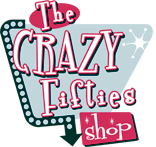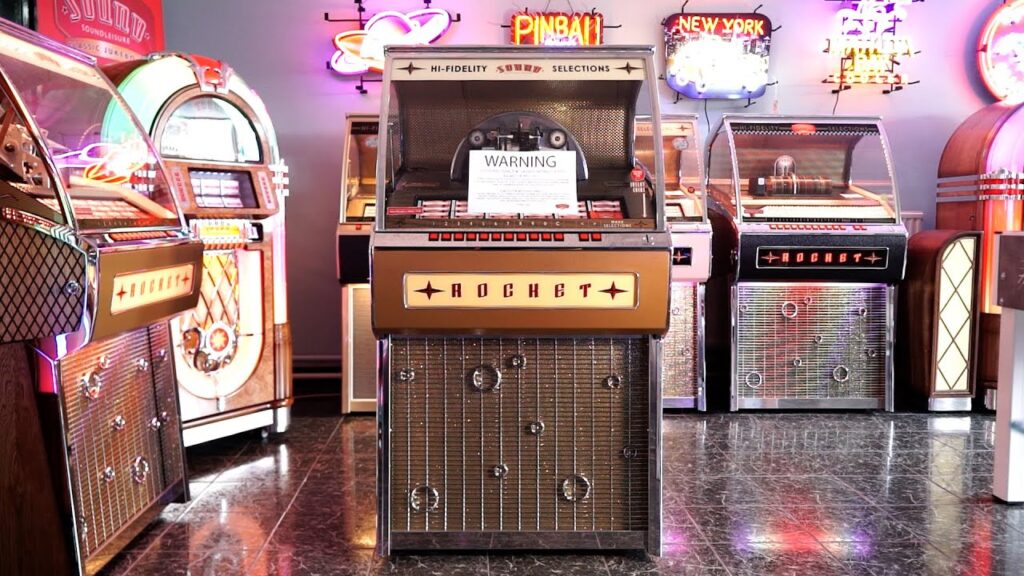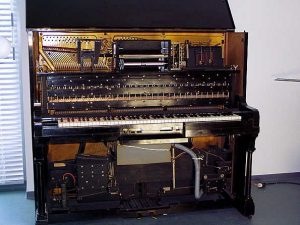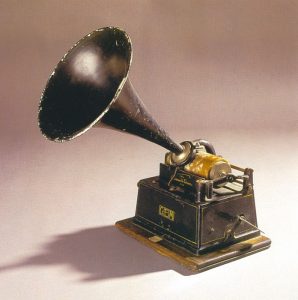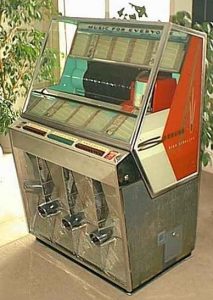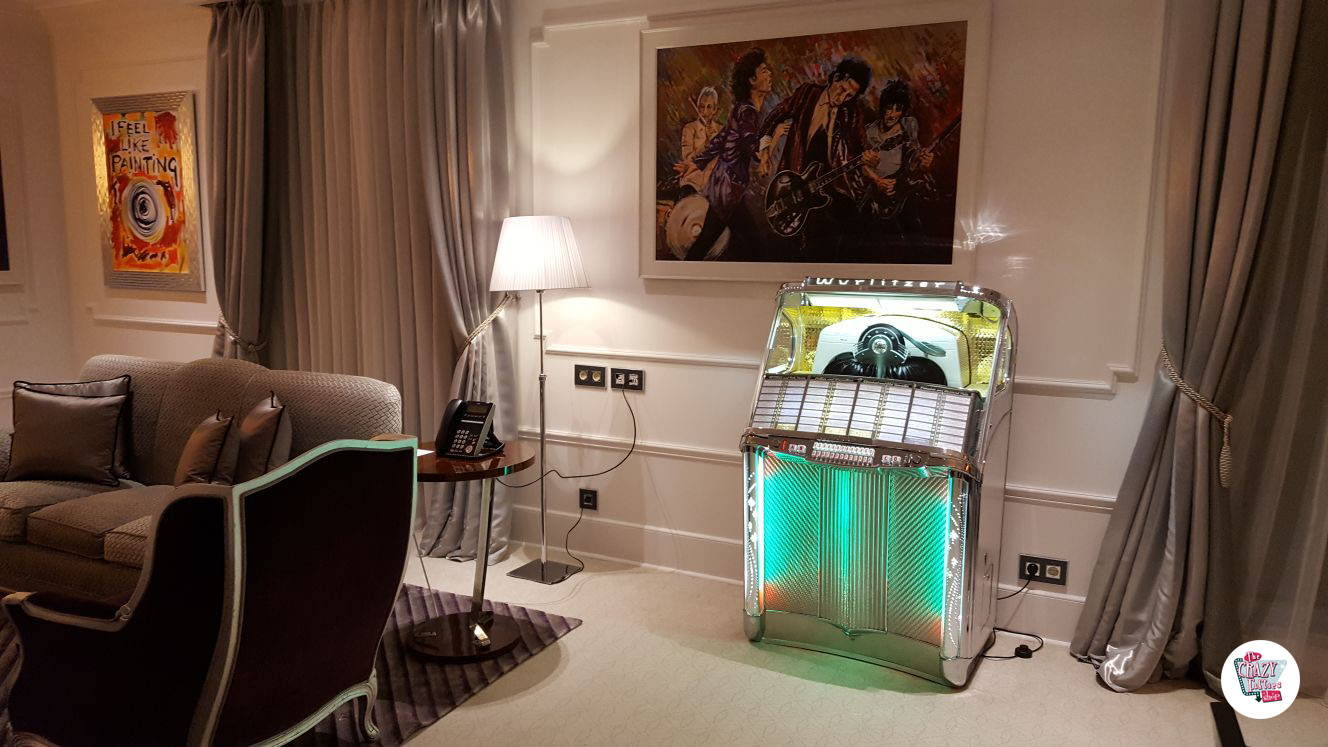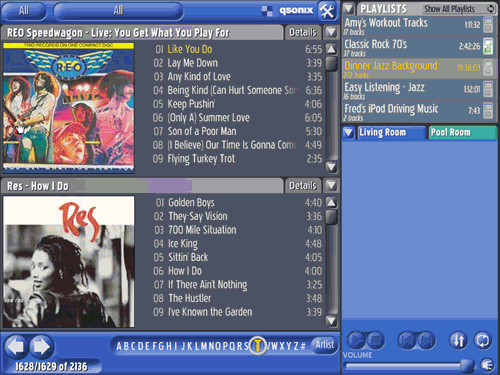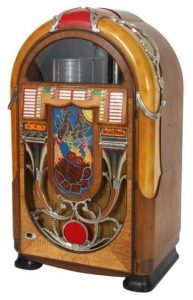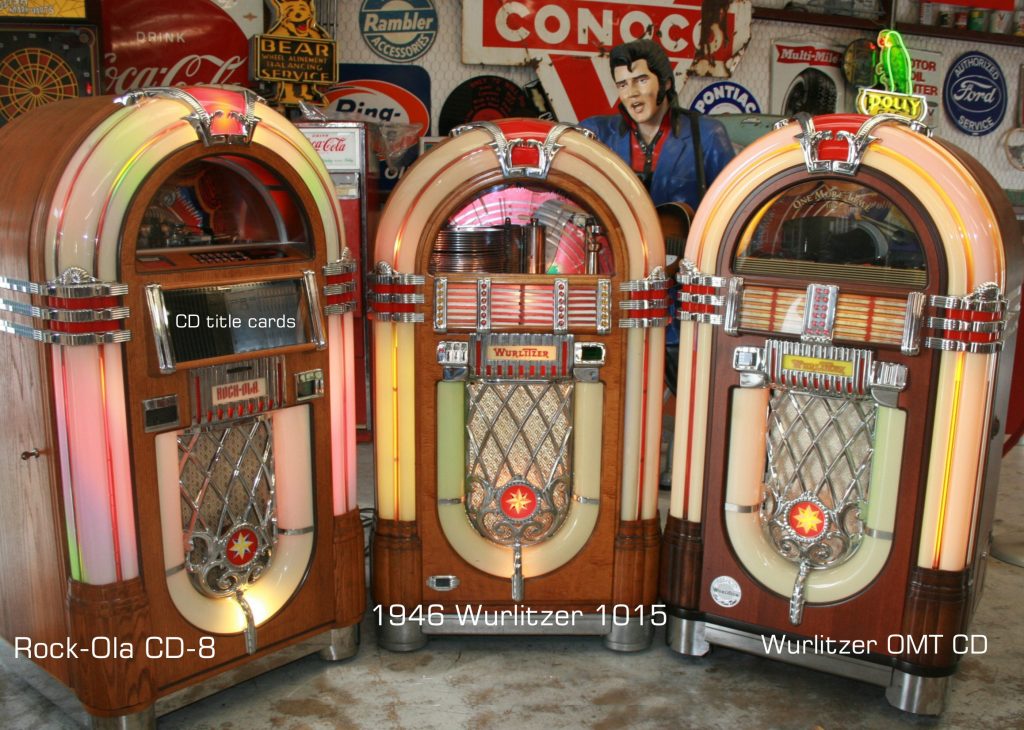Blog
History of the Jukebox
History of the Jukebox
Next we are going to tell you a little about the origin and the History of the Jukebox, also known as jukebox, jukebox o rockola. To begin we must know that a Jukebox is a partially automated device that plays music. Usually they are composed of 4 parts, these being a library, a selector, a carousel and a player, apart obviously from the electrical lighting and power system as well as a purse (if it is for exploitation).
Jukebox from the 60s and 70s
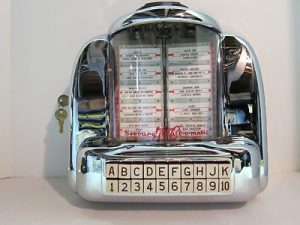
During those years models were introduced with different ornate lights and decorations, disco, psychedelic and other cosmetic accessories while the principle of operation remained invariably the same in comparison. The popularity "Counters" indicated to the seller the number of times the A side of the disc was played (the B side was hardly important), so only popular recordings remained on the menu or list and the least played were changed by others with the possibility of becoming successful. The Wurlitzer machines were unique because they could play side A and B of a disc and move on to the next selection; the Rock-Ola and Seeburg brands reproduced the chosen A sides, then the selected B sides and then stopped.
The most popular machines were Wurlitzer, Rock-wave, Seeburg and AMI, of which we can still find original machines perfectly restored today and even totally new machines, for example the prestigious brand Rock-Ola (with representation in Spain www.Rock-ola.es) continues to manufacture Original Professional Jukebox with the same style and soul but adapted to current technology, both CD's and digital and Sound-Leisure recently released 2 new models of Professional Jukebo CDs of 45 rpm.
Current Jukebox
In the History of the Jukebox The jump from vinyl record to CD could not be missed.
At the beginning of the 1980s, with the appearance of Compact discs, these became the main support for modern jukeboxes. Towards the end of the century a large number of companies began to introduce fully digital jukeboxes. Which implied not using any CD anymore, and safely downloading the melodies from the Internet or through a protocol of the owner of a transmission via telephone (cell phone tones). Additionally, the availability of selections became potentially enormous than what would be had in a simple CD, in addition to this, some machines are capable of informing which melody is heard at a given moment and where, expanding the commercial options.
Jukeboxes and their ancestors were a very successful industry at the time. Its popularity from the 1940s through the 1960s and in the 50s especially, caused the image of the Machines to be associated with the musical era of the Rock And Roll, which still persists today, but they were also very popular during swing music in the same way, so many restaurants or stores with a retro concept have a jukebox.
Nowadays, the production of these machines has been increasing in recent years, thanks to the introduction of programs that can emulate the operation of a classic jukebox to a digital jukebox on a PC. The form of operation is very similar to classic jukeboxes, however, nowadays these modern equipment have the capacity to store more music and play videos or even karoak according to the equipment and the program that the equipment uses. You can vary the cost of each section if the operator decides. The use of these digital machines can be more attractive than a classic jukebox because of the advantages they offer. As for example The Brand Rock-wave and its models with 1TB capacity (13.000 cd's)
Jukebox housing
The first jukeboxes were simple wooden boxes with a slot and some buttons. Over time they became more decorated and made use of colored lights, rotating lights, the use of chrome trim and various visual motifs. Many consider that the models of the 40s would be those belonging to the "golden age" as they have a stylized line with a markedly Gothic influence, like a kind of "Gothic rainbow of a cathedral". During World War II and during the Great Depression, new designs and retail alternatives reflecting the festive mood. Even before that jukeboxes were frequently one of the "escapes" from the problems of the Great Depression and the war. The Würlitzer 850 is an example from this era.
Progressive stylizations were appearing in the plane of the typical wooden machines of the early thirties, when presenting applications in metal and plastic, and some type of animation. But when the United States entered the war and with the latent need for metals and plastics, their production took a step backwards. In 1943 the Würtlitzer 950 returned to the use of wood, it should be noted that since the mechanisms were made of metal, not many parts were produced during this time. Rather, a new type of cabinet was used, since many of the mechanisms were assembled by hand, many of the pieces thus built generally needed -to be restored- the use of adaptations or modifications. The Victory cabinet switched from plastics to glass in the dash and lights. After the war the main materials became available again, marking the "boom" of jukeboxes.
The Wurlitzer 1015-Bubbler (Bubble) model of the Würlitzer brand typified the most popular aspect of all time. Many of these devices remained in use until the fifties, being associated with popular culture despite its origin in the 40 because of its unique and prominent stylistic design. created by stylist Paul Fuller, it is rumored that when the companies focused on the business of war, it was when Paul conceived the appearance of this model, resulting in one of the most popular icons of American culture.
The 40 soundphones are called "Golden Age" because the use of plastic in gold color predominated. Those of the 50 years are from the "Silver Age" for the motives or moldings in predominantly chrome. Towards the 60 years, with the increase in fast food businesses, restaurants wanted to have customers who enter and consume quickly, and not have them there, so the machines became less decorative. The mechanism of changes used at that time made them appear rather as machines for making cigarettes.
Algunos de los modelos mas populares son
- Wurlitzer 1015
- Wurlitzer 1700
- Wurlitzer 1800
- Wurlitzer 1900
- Wurlitzer 2000
- Wurlitzer 2100
- Ami h120
- Ami h200
- Ami I
- Ami Continental
- Ami Continental 2
- Seeburg HF100R
- Seeburg HF100R
- Seeburg KD200
- Rock-ola Tempo 1-200
Nowadays:
Solamente hay dos fabricantes en la actualidad que sigan fabricando Jukebox, uno es Sound Leisure (Mercado Europeo) y el otro es Rock-ola (mercado Americano), aunque ambos exportan a sendos continentes.
Jukebox Sound Leisure
Sound Leisure es una empresa británica que se especializa en el diseño, fabricación y suministro de jukeboxes y otros equipos de entretenimiento. Es una de las principales marcas de jukeboxes del mundo, con una reputación por producir productos de alta calidad y confiables.
Fue fundada en 1994 y desde entonces se ha convertido en una marca conocida en el sector del entretenimiento. Ofrece una amplia variedad de jukeboxes, incluyendo modelos digitales y mecánicos, así como máquinas personalizadas para clientes específicos.
Sus productos están diseñados para ser fáciles de usar, con características como pantallas táctiles, sistemas de sonido de alta calidad y una gran biblioteca de música. También ofrecen opciones de personalización, como arte y branding, para ayudar a los negocios y particulares a personalizar sus jukeboxes.
Los productos de Sound Leisure se utilizan en una variedad de entornos, incluyendo bares, restaurantes, hoteles y parques de atracciones. Son conocidos por su compromiso con la calidad, el servicio al cliente y la innovación, lo que los hace una elección popular entre los profesionales del sector del entretenimiento.
Rock-ola Jukebox
The name Rockola is a variation of the Rock-Ola device name of the invention of the founder of the machine builder David Cullen Rockola, and is not an acronym for the word Rock and Victrola as many people think. It is one of the most common names with which the device is usually designated, the other is Sinfonola. The word is also associated with the 50 and 60 years during the Rock and Roll era. The History of the Jukebox Would be incomplete without manufacturers like Rock-ola or Wurlitzer.
Donde comprar en la actualidad:
Currently, you You can find the Jukebox (rock-wave, jukebox, flask, fountain), in www.thecrazyfifties.es, since we have a wide catalog of Jukebox, as well as practically everything you need to set up your own American roadside bar (diner) since we have a wide catalog of American furniture from the 50's and 60's: American vintage style chairs, American-style dining tables, diner benches, double benches, corner units, bar stools as well as American-style decoration accessories, either, gasoline pumps, retro lighting lamps, decorative figures (waitresses, hot dogs, burgers, betty boop ) pictures, bubble gum machines, retro record players, retro telephones, Coca-Cola type soda vending machines, clocks, retro sofas, even sofas and tables made with car parts such as cadillac sofas, motor tables etc ...
